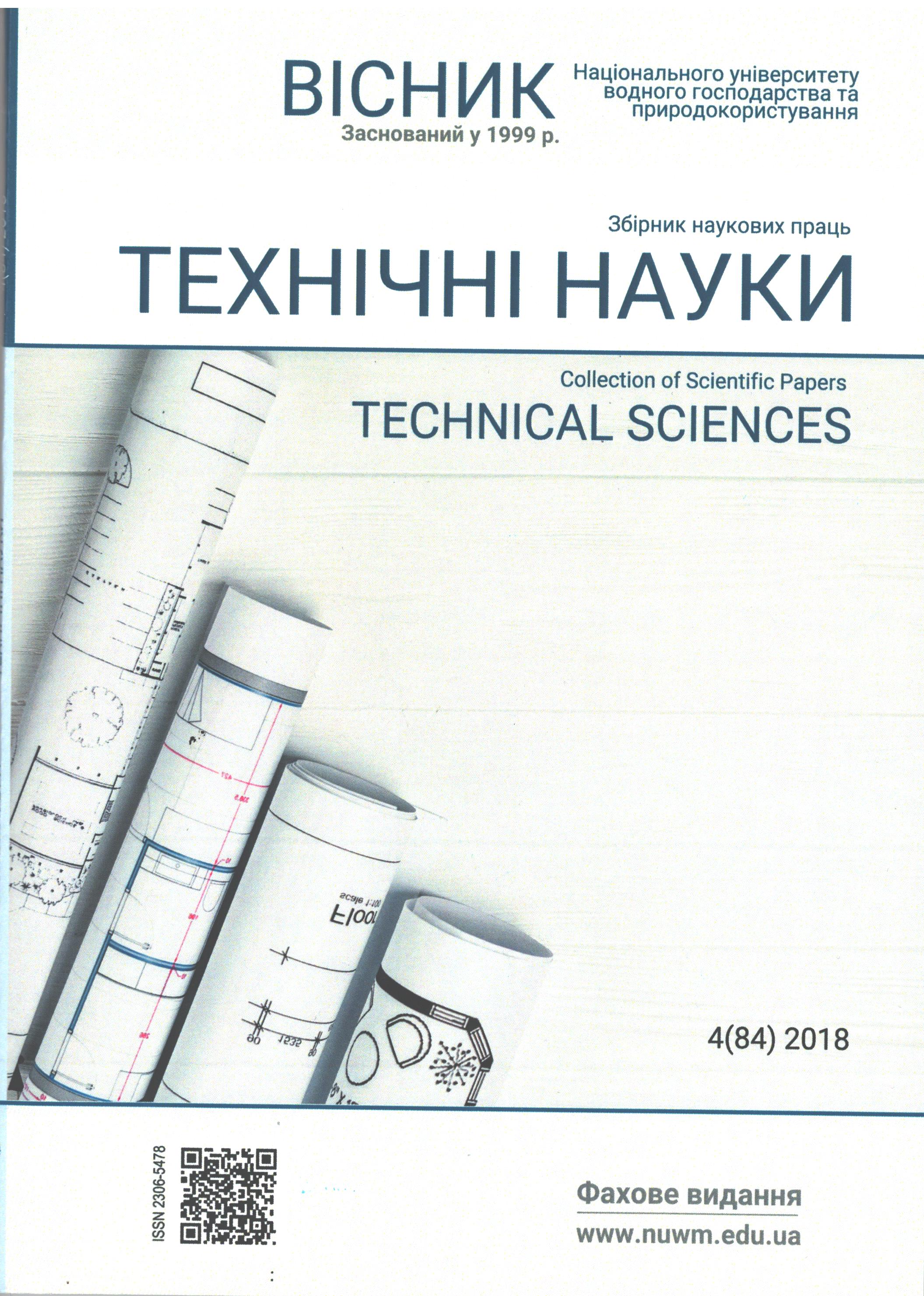INVESTIGATION OF TEMPERATURE REGIMES IN GENERATED VORTEX AIR FLOWS
DOI:
https://doi.org/10.31713/vt420185Keywords:
tornado generation, planned experiment, temperature of vortex flowsAbstract
The presented results are a continuation of studies devoted to thegeneration of vortex flows (tornadoes). As a result of the plannedexperiment, a mathematical model was obtained that allows to predict the change in the air temperature in the upper layers of vortex flows (within the variation factors).The vorticial atmospheric conditions are one of the most commontypes of motion, both in nature and in modern technical devices. Such flows are characterized by the movement in the field of centrifugal forces and fundamentally different from the axial flows of gas by parameters such as: axial, rotational, radial velocity, gradients of static and full pressure, turbulence, etc.The following methodology for predicting temperature regimes under the conditions of swirling air flow has made it possible to determine the main significant parameters, modes and time characteristics that led to changes in the studied parameters.The study of changes in temperature indices in the upper layers ofvortex flows was carried out with the help of a planned experiment on the installation described [1].Experiments were carried out in a mode determined by the matrix of the three-factor plan of Box-Behnken (Table 1).The following factors, variations (studies) were selected:Engine revolutions – Vd;Angle of guides (creating vortex air movement in the installation) atthe bottom of the installation – α;The area of opening of air damper (for adjusting the volume of airpumped through the installation) – Sz.The chosen variables of the planned experiment have differentdegrees of influence on the studied temperature change in the airvortex flow.The greatest effect was observed with certain combinations of factors.The greatest temperature difference was observed at the lowestvalues of the air guides (α = 5°) and the smallest value of the ratio of open air damper to the total installation area Sz. That is, the engine speed played a minor role in relation to the parameters that provide the degree of twisting of air flows, which in turn speaks of the significant effect of stable vorticial states of air on temperaturechange towards the decrease. Such conclusions are confirmed bynatural vorticial phenomena in the form of a tornado, which is always accompanied by a sharp decrease in temperature. At the same time, the behavior of vortex entities (its mathematical models), in terms of the selected factors, suggests the need for further study of these processes and clarification of the conditions of generation and formation of tornado-like air masses.References
Клименко М., Кухнюк О. М. Експериментальне дослідження вихрових повітряних потоків. Вісник НУВГП. Технічні науки : зб. наук. праць. Рівне : НУВГП, 2018. Вип. 3(83). С. 94–102.
Пиралишвили Ш. А., Поляев В. М., Сергеев М. Н. Вихревой эффект. Эксперимент, теория, технические решения / под ред. А. И. Леонтьева. М. : УНПЦ «Энергомаш», 2000. 412 с.
Haan F. L., Sarkar P. P., Gallus W. A. Design, construction and performance of a large tornado simulator for wind engineering applications. Engineering Structures. 2008. V. 30. P. 1146–1159.
Вараксин А. Ю., Ромаш М. Э., Копейцев В. Н. Торнадо. М. : ФИЗМАТЛИТ, 2011. 344 с.
REFERENCES:
Klymenko M., Kukhniuk O. M. Eksperymentalne doslidzhennia vykhrovykh povitrianykh potokiv. Visnyk NUVHP. Tekhnichni nauky : zb. nauk. prats. Rivne : NUVHP, 2018. Vyp. 3(83). S. 94–102.
Pіralіshvіlі Sh. A., Poliaev V. M., Serheev M. N. Vіkhrevoi еffekt. Еksperіment, teorіia, tekhnіcheskіe reshenіia / pod red. A. І. Leonteva. M. : UNPTs «Еnerhomash», 2000. 412 s.
Haan F. L., Sarkar P. P., Gallus W. A. Design, construction and performance of a large
tornado simulator for wind engineering applications. Engineering Structures. 2008. V. 30. P. 1146–1159.
Varaksіn A. Yu., Romash M. Е., Kopeitsev V. N. Tornado. M. : FYZMATLYT, 2011. 344 s.

